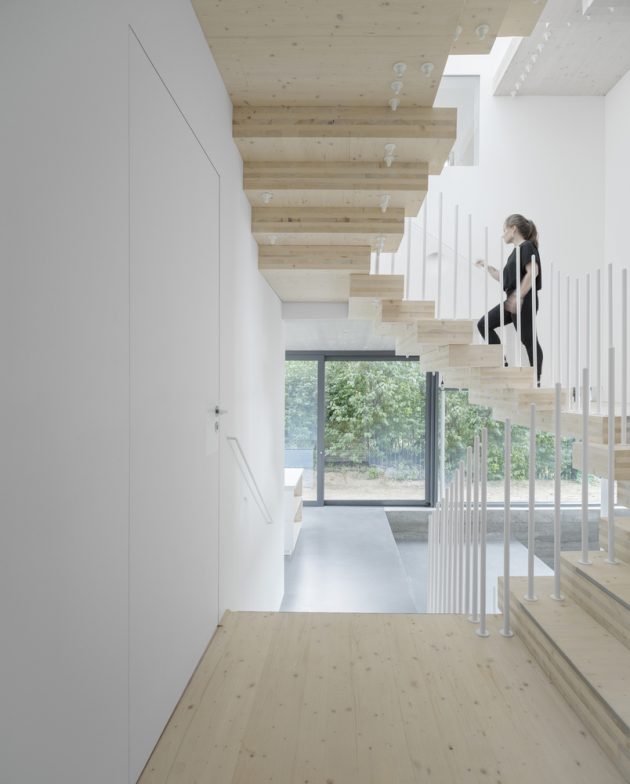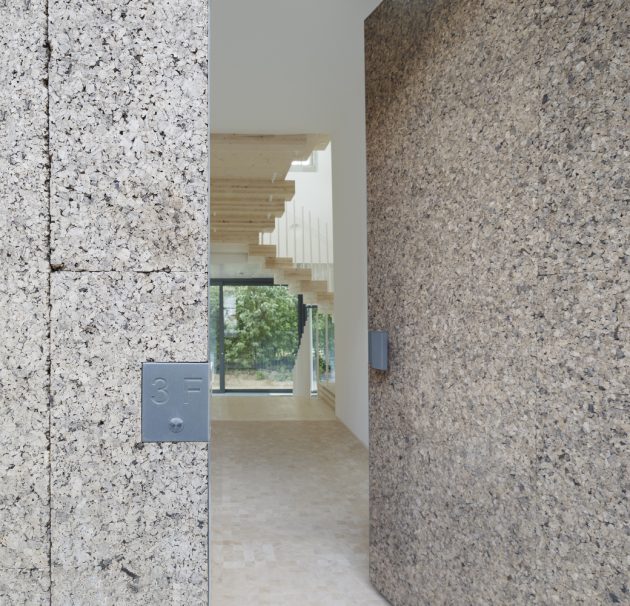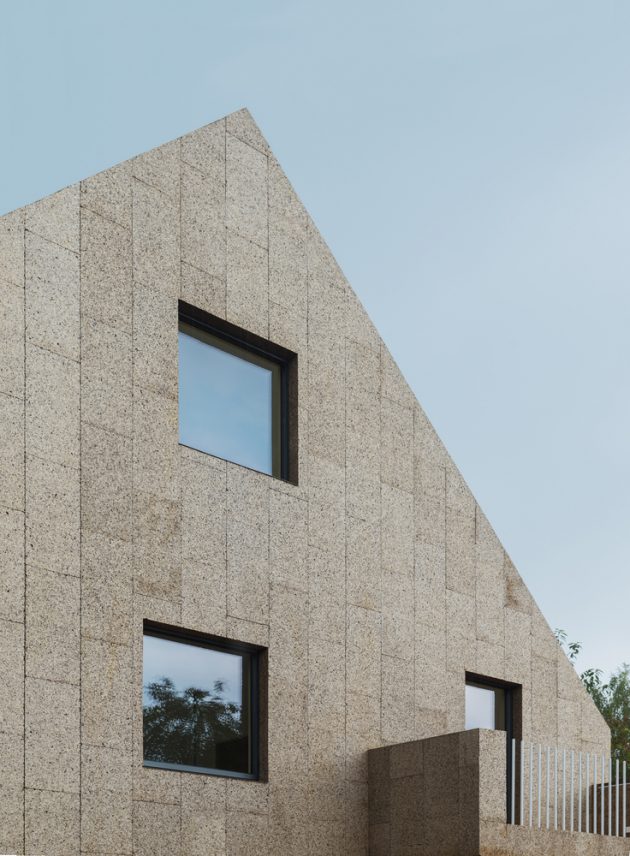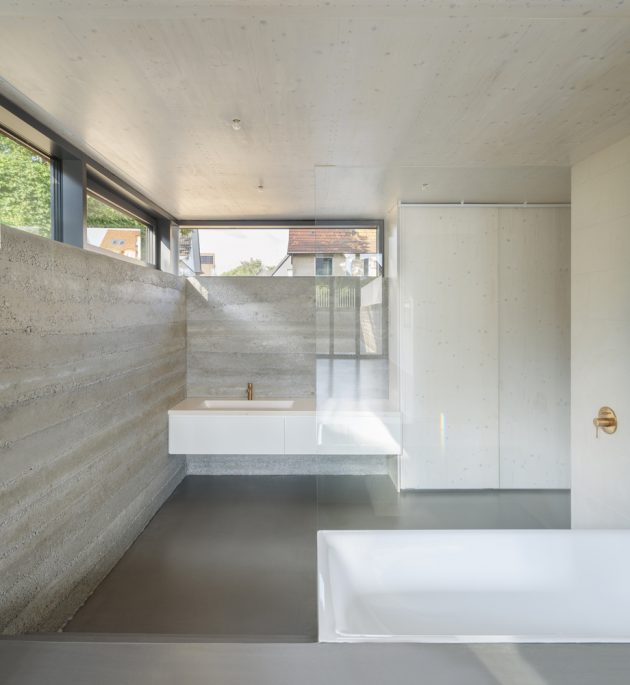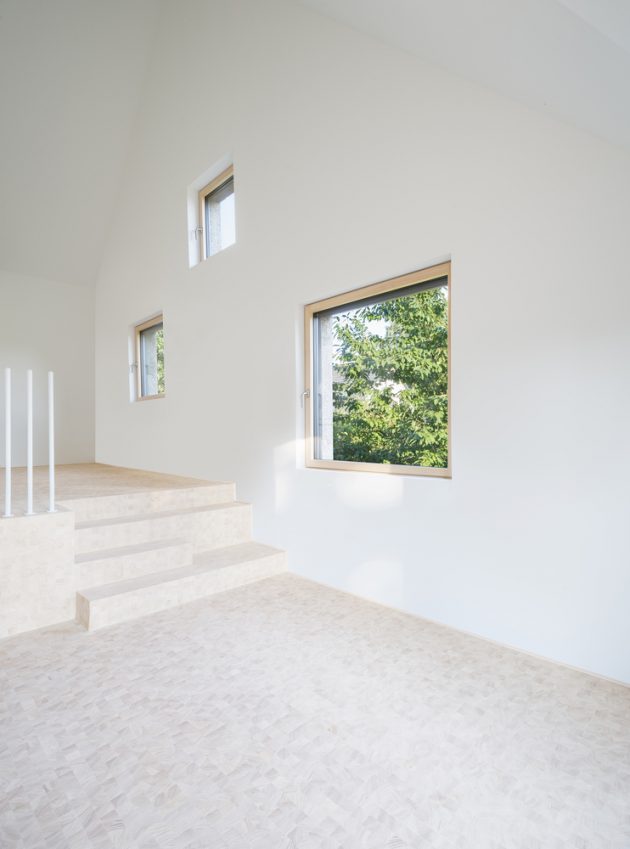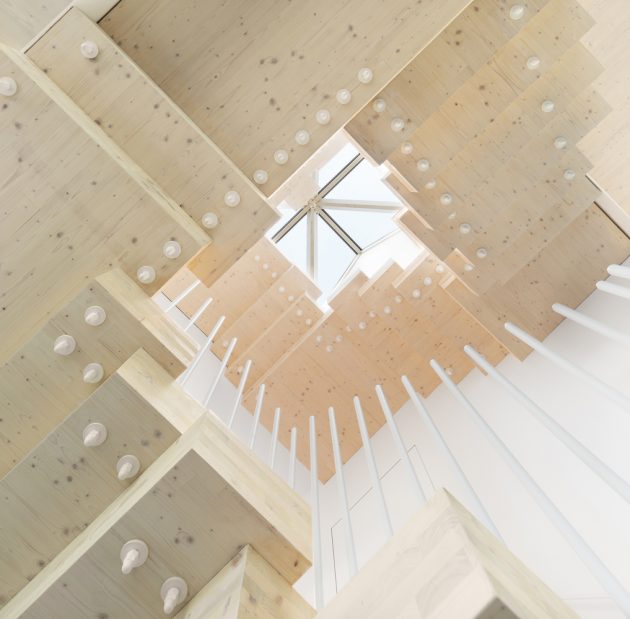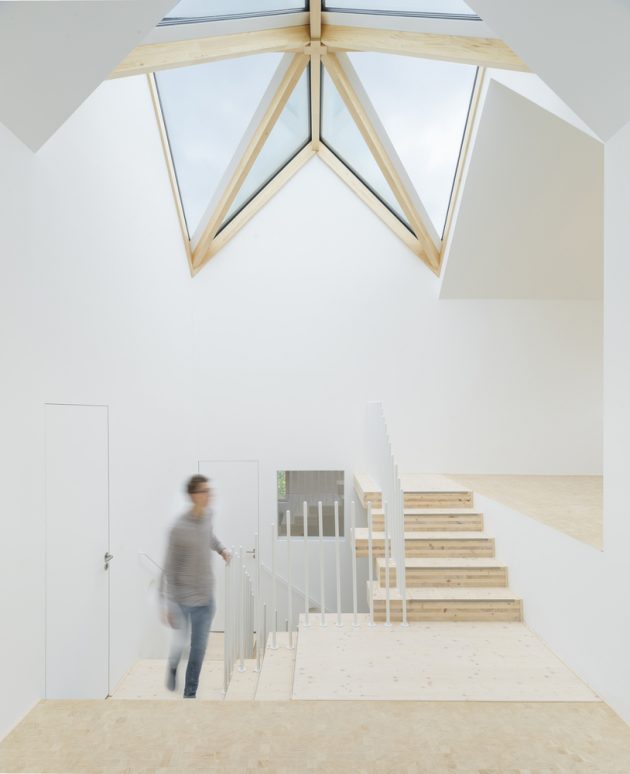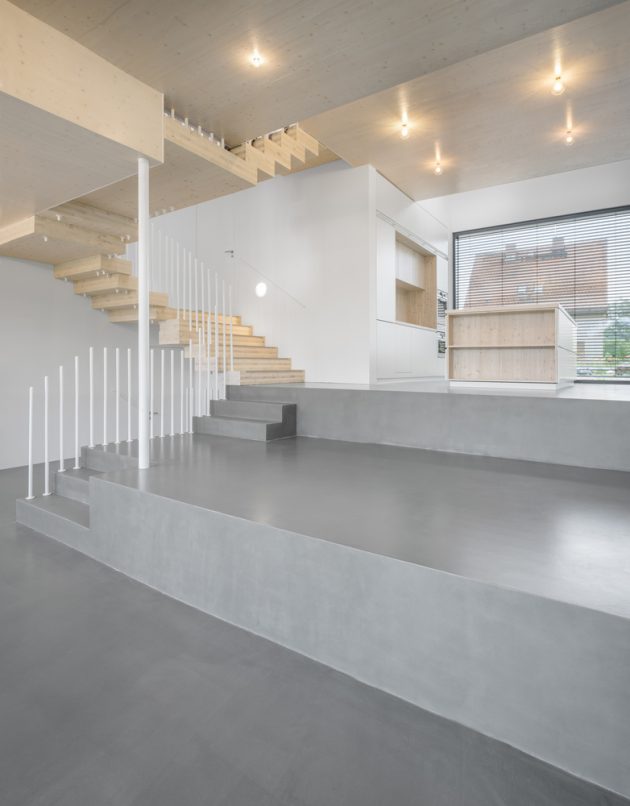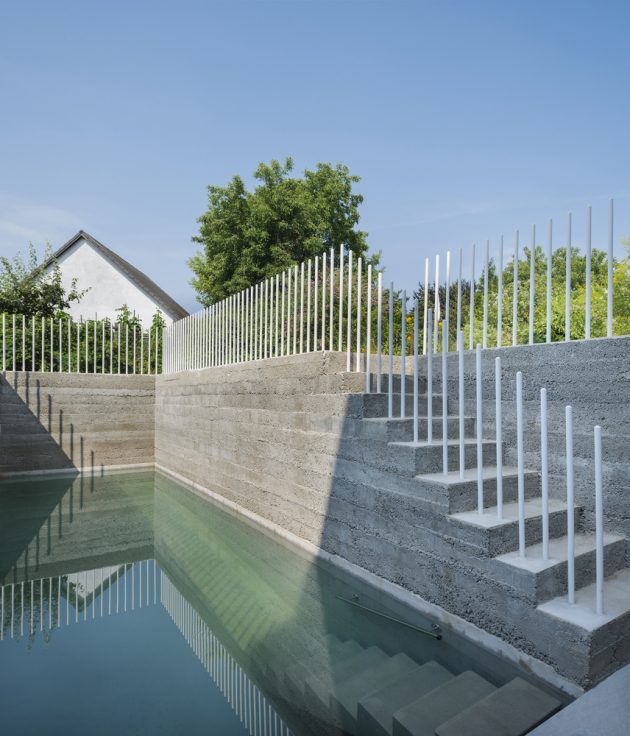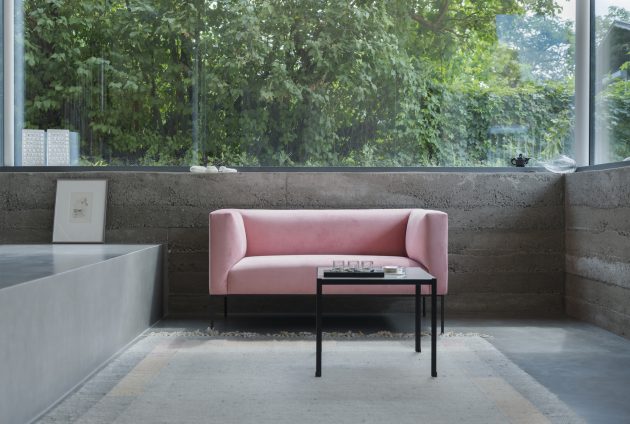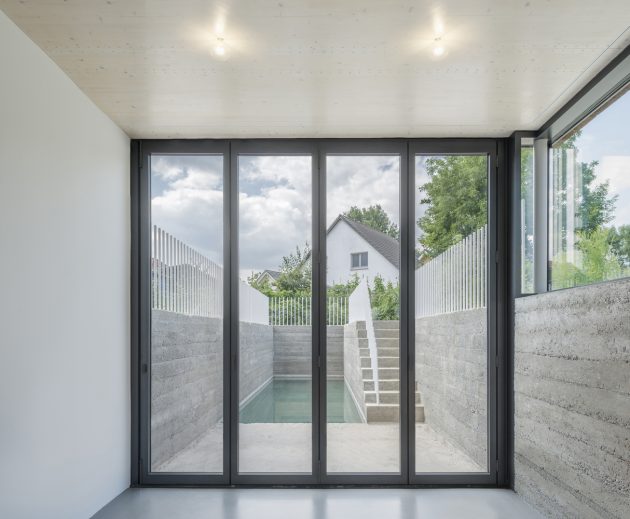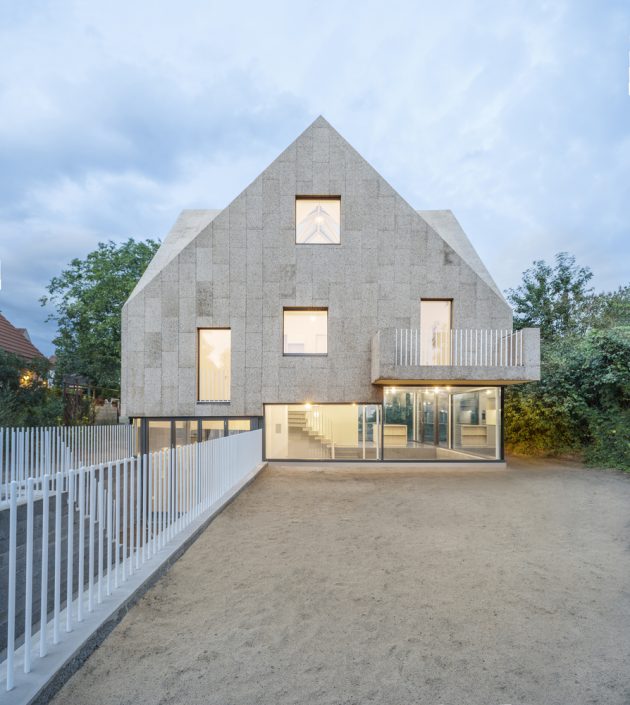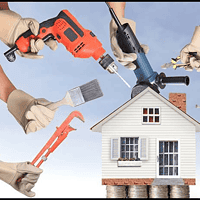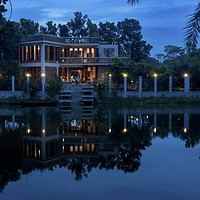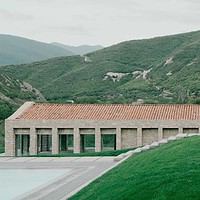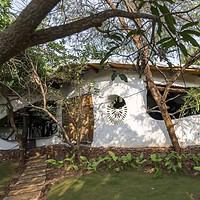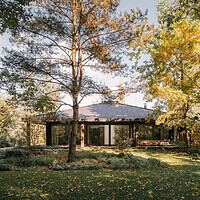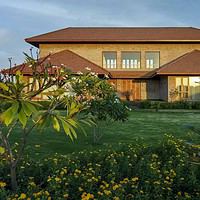Project: Cork Screw House
Architects: Rundzwei Architekten
Location: Berlin, Germany
Area: 3,444 sf
Photographs by: Gui Rebolo
Cork Screw House by Rundzwei Architekten
Rundzwei Architekten is a studio that comes from Berlin, Germany. Their design for the Cork Screw House in Germany’s capital city has caught our attention with its unique look and an intriguing choice of materials.
This home is clad in natural cork which gives the exterior a delicate texture but also makes the home energy efficient with the cork’s high insulation property. The interior is filled with natural light which really opens up the minimalist open floor plan to the outdoor sights.
Office principals Andreas Reeg and Marc Dufour-Feronce place special attention on the local connection of their buildings.e for the lower ground living levels. The outdoor walls of the long stretched pool are also lined with the material. The base waraditionally applied in layers and then manually compacted. This results in an open, porous and characterful textured surface.
Maximising usable area by lowering floors and introducing multi split-levels
Although the local planning regulations allow for a maximum floor size of 100m2, by lowering the base floors and arranging the upper floors in multiple split-levels, the architects have maximised the gross floor area to over 320m2. The planning concept of two part construction – base and top – was maintained for the material selection: the levels below ground are built in rammed concrete with the upper levels framed in timber.
Cork panels on facade and roof
On the ground floor large scale glass elements fill the interior with daylight. The facades above, as well as the roof surfaces l in Portugal. As a by-product of the cork production process for bottles, granulated cork waste is formed into facade panels under pressure and heat. During this process the natural resins of the cork are released, binding the granulate thereby creating a light weight and durable cladding material through sustainable methods. The resulting cork facade panels are naturally weather and mold resistant without any artificial additives.
Natural cork has very high insulation values and is well suited to use as a monolithic facade cladding. The choice of this material contributes significantly to the energy efficiency and sustainability of the building. Cork also provides good acoustic insulation and reduces the sound of dripping rain. Initially it was through the client’s interest in achieving good acoustic performance that the architects came across this unusual choice of material.
Natural construction materials, natural ventilation
During the construction process the architects abstained from the use of chemical adhesives and construction foam. Wood fibre and cellulose insulation materials were used in addition to the insulating cork panels. Humidity absorbing materials such as timber and gypsum fibre boards with permeable paints allow for a natural room climate. As a result the building doesn’t need an active ventilation system despite the very low energy standard. Through a stratified heat storage system supplemented by roof integrated solar panels, the heating supply is almost self-sufficient adding to the efficiency of the building’s overall performance
